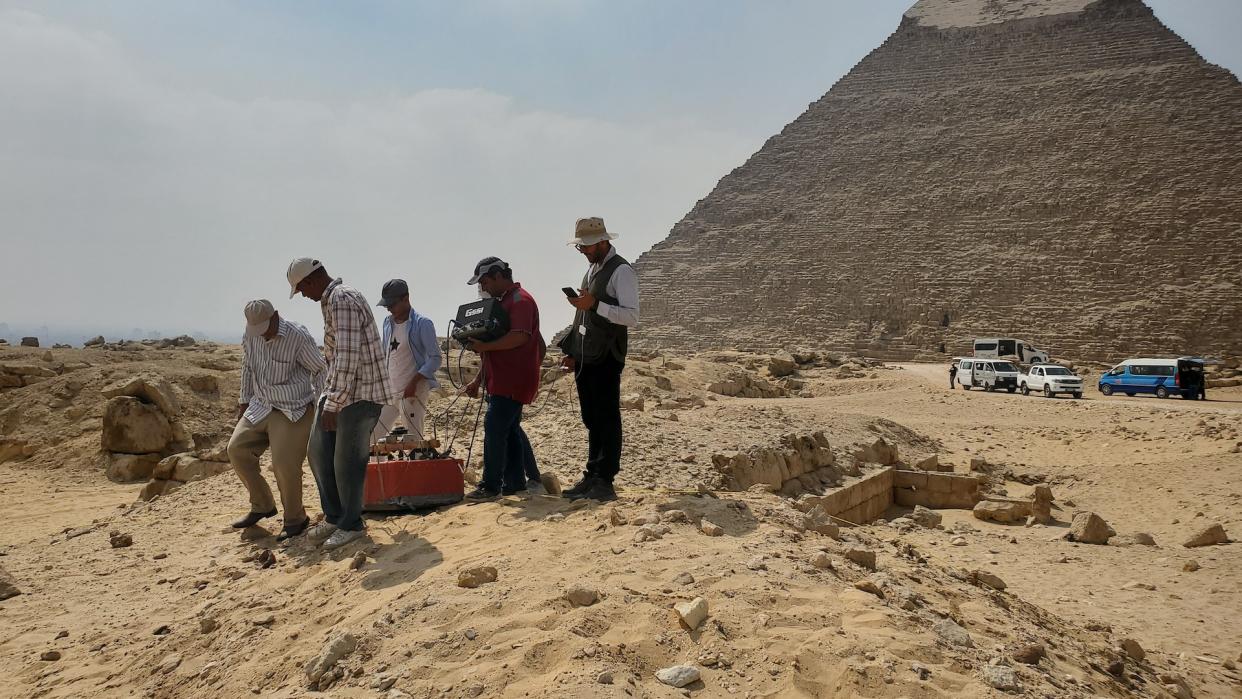Mysterious L-shaped structure found near Egyptian pyramids of Giza baffles scientists

Using remote sensing techniques, archaeologists in Egypt have discovered a mysterious L-shaped structure underground in the western cemetery of Giza.
The western cemetery contains burials of royal family members of the royal family and high-ranking officials, the team of scientists wrote in a study. Many of their tombs have above-ground rectangular stone or mud-brick structures with flat roofs known as "mastabas."
There is an area in the middle of the cemetery where no aboveground structures have been found. To search for remains in this area, the team used a technique called electrical resistivity tomography (ERT), in which electrical currents are sent into the ground and resistance is measured to detect remains, along with ground-penetrating radar (GPR), a technique that sends radar into the ground and, after it bounces back, maps the underlying structures.
The team found an anomaly roughly 6.5 feet (2 meters) beneath the surface. It appears to be an L-shaped structure measuring at least 33 feet (10 m) in length, the team wrote in their paper, published May 5 in the journal Archaeological Prospection. From the readings, the L-shaped structure "seems to have been filled with sand, which means it was backfilled after it was constructed," the team wrote in the study.
The deeper structure was a "highly resistive anomaly" according to the readings, suggesting it could be a mix of sand and gravel, or perhaps an air void, the team said.
Related: 3,500-year-old 'rest house' used by ancient Egyptian army discovered in Sinai desert
Excavations to determine what the L-shaped structure is are now underway, study first author Motoyuki Sato, a professor in the Center for Northeast Asian Studies at Tohoku University in Japan, told Live Science in an email. Sato said he is confident that the structure is not a natural phenomenon, as "the shape is too sharp."
Peter Der Manuelian, a professor of Egyptology at Harvard University who was not involved in the study, told Live Science in an email that "it's an interesting area, one that has avoided exploration due to the absence of superstructures."
RELATED STORIES
—Archaeologists find top half of giant Ramesses II statue, completing a century-long puzzle
There are L-shaped offering chapels at Giza, but these are usually aboveground, he said. "I'm not sure just what this anomaly represents yet, but it is certainly worthy of further exploration."
The remote sensing work was carried out between 2021 and 2023 by a joint team of scientists from Higashi Nippon International University, Tohoku University, and Egypt's National Research Institute of Astronomy and Geophysics.

